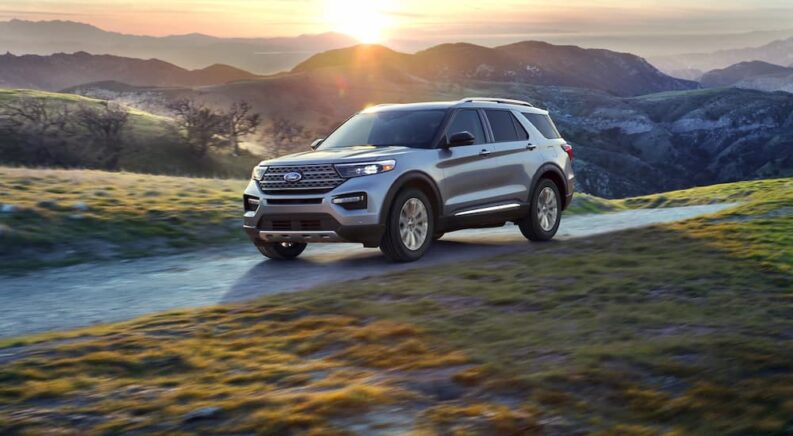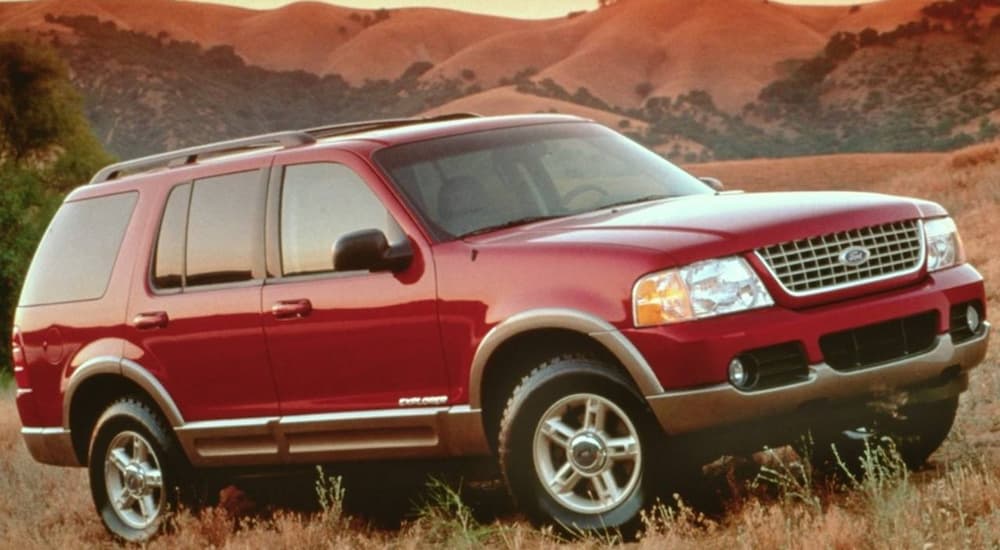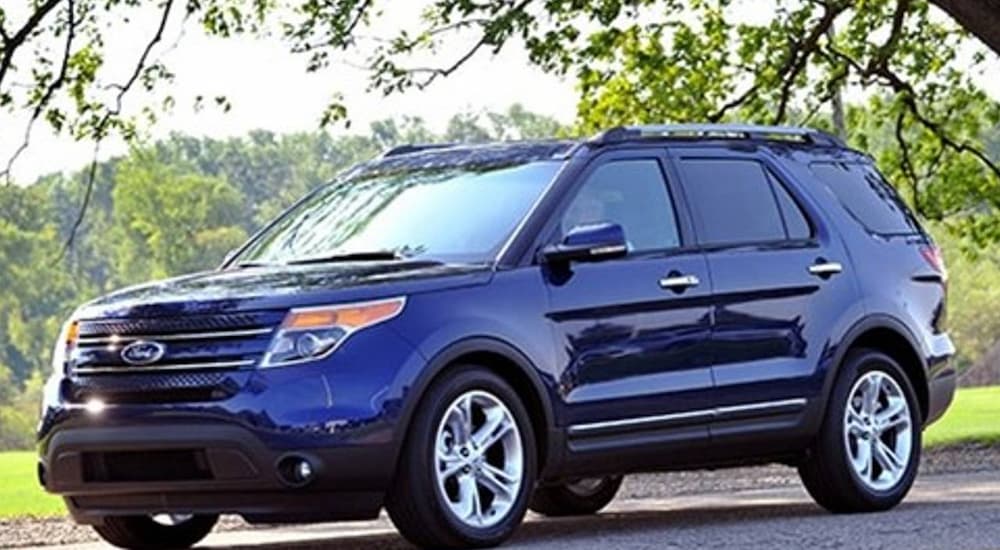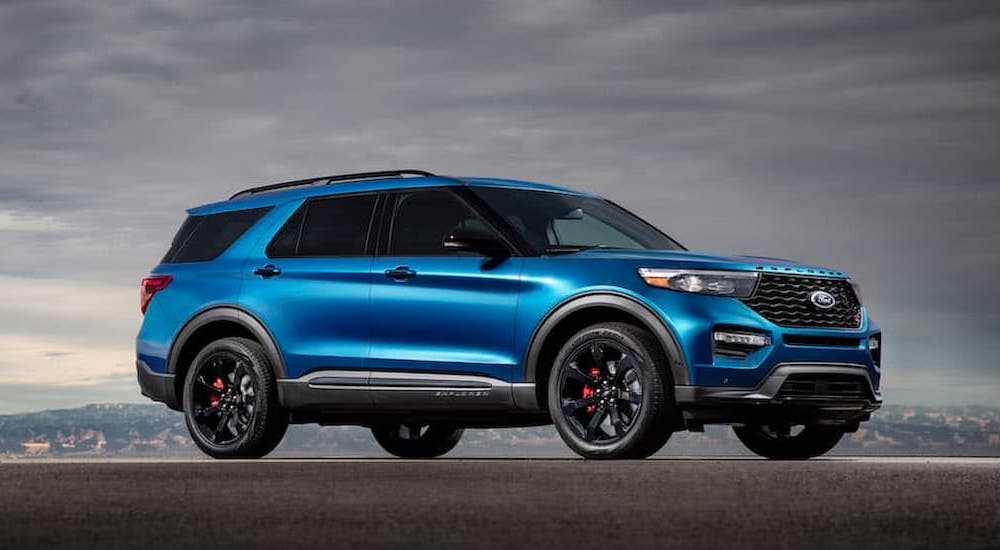Seeing an SUV on the road in this day and age isn’t exactly a rare occurrence; they’re everywhere and exist in a multitude of different shapes and sizes. From the crossover and subcompact classes to the ones that are powered by electricity alone, variety is the name of the game when it comes to the modern design of this vehicle class—so how did we get here?
It seems like only yesterday that the SUV was associated with gas-guzzling powertrains and vehicles of unusual size. How did it become accessible and scaled down to the point where it’s now the ideal vehicle for the average consumer? The fact is that the SUV would not be where it is today in terms of popularity had it not been for the Ford Explorer. This SUV has remained in production ever since its debut in the early 1990s, and it has become the flagship product of the Ford fleet alongside the F-150. Finding a Ford Explorer for sale these days is like looking for hay in a haystack, and in commemoration of this ubiquity, we would like to examine the history of how this vehicle paved the way for the modern SUV boom.

1991: A New Hope
The early 1990s was a pivotal period for the automotive industry. The previous decade had been one where emphasis on sports cars, such as the Toyota Supra and Mustang GT, had been all the rage; the offerings in the SUV field had been minimal, with Ford having success with their Bronco competing against other domestic offerings such as the Chevy Blazer and Jeep Cherokee. It was during this time Ford unveiled the newest member of its fleet, the Ford Explorer.
Unlike its competitors, the Explorer was marketed to consumers as something that adhered to two distinct demographics. It was an off-road capable but family-friendly vehicle that was more stylish than a station wagon or minivan. Available as a four-door SUV and a sportier two-door model, the first generation of the Explorer made use of a 4.0L V6 engine, similar to the various versions of its predecessor, the Bronco.
1995-2010: Attack of the Clones
As the decade continued, the Explorer was getting ready to start its second generation. While the 1990s were an era fraught with controversy and many changes in trends and popular culture, Ford was doing some of their best business as an automobile manufacturer. The F-150 had become the highest-selling vehicle in the United States, with its sedans, the Taurus and Escort, also generating high sales, along with its other pickup, the Ford Ranger. If sales were any indication of popularity, it was apparent that the Explorer had ascended to the top, with not only being the highest-selling SUV on the market but the third top-selling vehicle in the country—far surpassing the Jeep Grand Cherokee in units sold.
Undaunted, the Explorer continued to operate with a six-cylinder powertrain and continued to make improvements to adhere to the growing changes in consumer needs. Other manufacturers were offering their own SUVs to compete with Ford, most notably the Honda CR-V and Toyota RAV4. As the 1990s drew to a close, emphasis on the SUV market began to change considerably. The Explorer maintained its reputation as a family-friendly off-road option while bigger SUVs were beginning to gain traction in popularity—the most notable of these being the Hummer and the Ford Excursion. The Explorer remained consistent, and as the new millennium began, this vehicle would continue to be a standard-bearer of the ideal SUV.
With the end of the 20th century, many more changes in the industry would impact not just the Explorer but SUVs in general. There was now a growing need for smaller-sized models that could be more accessible to city-dwelling families (who were in need of storage space) and vehicles that could handle the rigors of city driving. Remarkably, it was this need that led to Ford premiering a smaller SUV known as the Escape, which would offer the same attributes of the Explorer on a smaller scale. In 2006, the Escape would do away with its five-speed manual transmission, which had been available since the launch of the vehicle. The other manufacturers followed suit, and now almost all SUVs are exclusively equipped with automatic transmissions.
2011-2020: The Force Awakens
Ten years into the new millennium and consumers everywhere now had wildly differing expectations from their SUVs. The marketplace was now full of several diverse offerings as many manufacturers repurposed their efforts toward focusing more on the development of SUVs and limiting the production of four-door sedans. As they had done for many years since their inception, Ford responded to these needs, and the Explorer was about to undergo some significant changes that would propel it forward in innovation as much as in popularity.
In 2011, the fifth generation of the Explorer saw the vehicle adopt a new body style that was more in line with the various crossover models that were becoming popular in the marketplace. This new design featured a more stylish exterior that was more curvaceous and appealed to the wants of drivers who craved style and aesthetics. But the most significant changes had to do with its technological innovations and a new powertrain that further cemented the Explorer as the ideal family-friendly vehicle.
The standard six-cylinder engine, which had been synonymous with the vehicle, was gone; in its place was a turbocharged four-cylinder engine. While the V6 was still available for those who wanted it, the new Explorer focused on providing a fuel-efficient SUV that still upheld the qualities of its predecessors. In terms of driving assistance, Ford now included a variety of features designed to enhance the overall experience. Now adaptive cruise control and automated emergency braking were accessible to consumers who had always depended on Ford’s predilection for safety as well as performance. These new innovations certainly didn’t go unnoticed, as the vehicle was awarded North American Truck of the Year in 2011.
2020-Present: Rogue One
Currently in its sixth generation, the Ford Explorer continues to be the standard for what the majority of SUVs ascribe to. Always one for understanding the necessity to improve, the Ford Explorer now comes with hybrid options—for consumers looking to save money on fuel costs—and an ST version geared toward drivers who crave high-octane performance. Ford even offers training in performance driving with their ST driving school, which will certainly pave the way for a new generation of fans of the vehicle and the brand at large.
While much in the industry has changed since the first Explorer rolled off the assembly line in 1991, we certainly owe a debt of gratitude to the vehicle for helping make the SUV class what it is today. Whether someone’s interested in performance, safety, or a reliable means of transportation for their family, the Ford Explorer remains the standard-bearer of the entire vehicle class. And while the future is unwritten, it is safe to say that the Explorer will endure as the concept of “an accessible SUV” fully realized. No matter what comes next, its legacy shall remain etched in stone.







